Mistwalker
Gold Member
- Joined
- Dec 22, 2007
- Messages
- 19,077
Some of these images are parts of a couple of larger projects, some of them are illustrations for talking points during my lectures in an adult forest class I conduct here locally. But I thought I'd share this part of it here to share some knowledge going into the cold wet season. The accelerant used here is obviously pitch-pine or fatwood, but the technique and philosophy will apply just as well to highly flammable chemical accelerants.
Yes, it is really raining. No it's not a pouring rain. It is a light rain in which I was out in the open for ease of documenting for other purposes. But it is something I have done in somewhat harder autumn rains, at the bases of large trees in dense evergreen thickets, on hunting and trapping trips in the 70s and 80s (pre-weather apps on cell phones) in order to avoid hypothermia while caught out in cold rains unexpectedly.
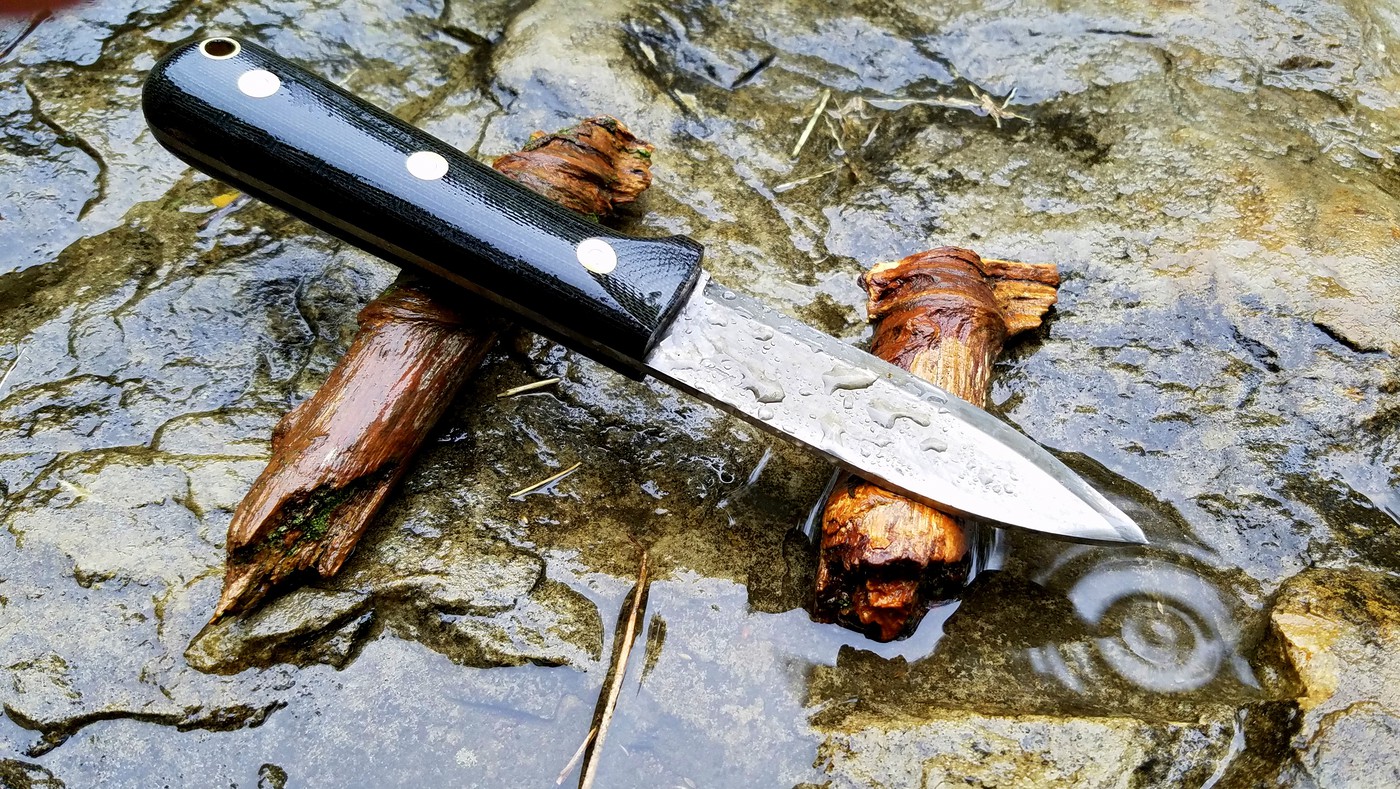
Had I not been taking the time to document this, as well as the time to explain the process to a game warden fiend in the area who stopped in to talk when he saw my truck, the dry side of the bark I was collecting here would have stayed dry longer. But it all still worked out in the end. It just illustrates that you work more with purpose than with speed to accomplish this task.
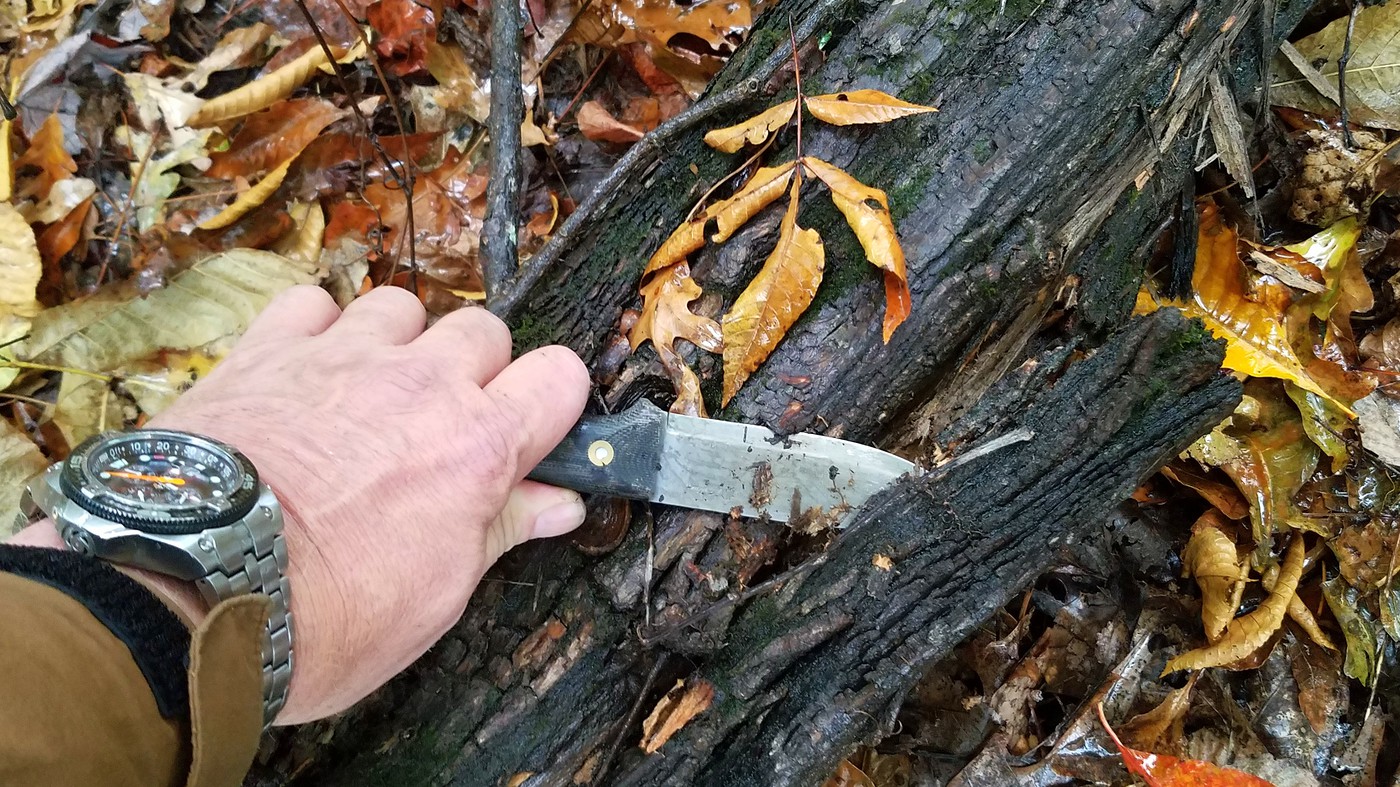
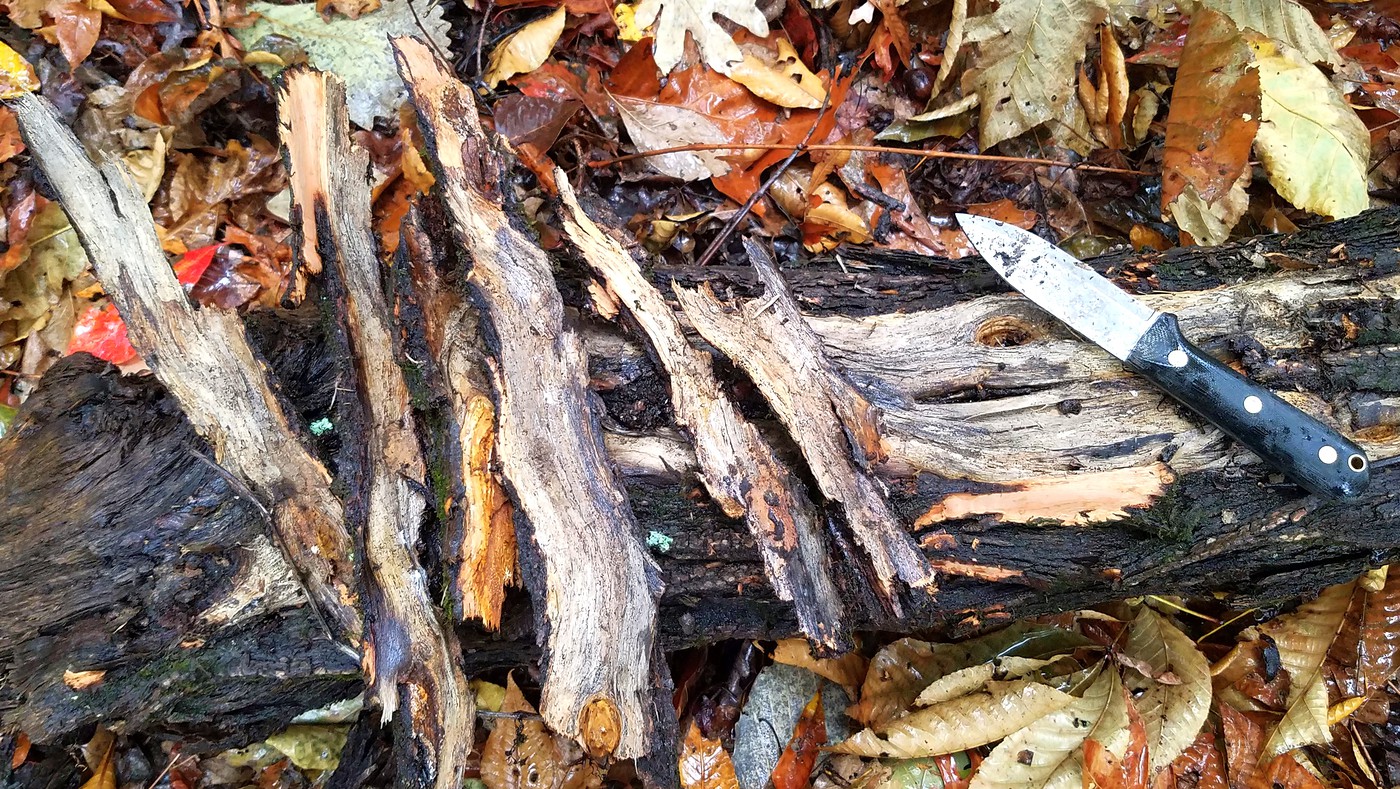
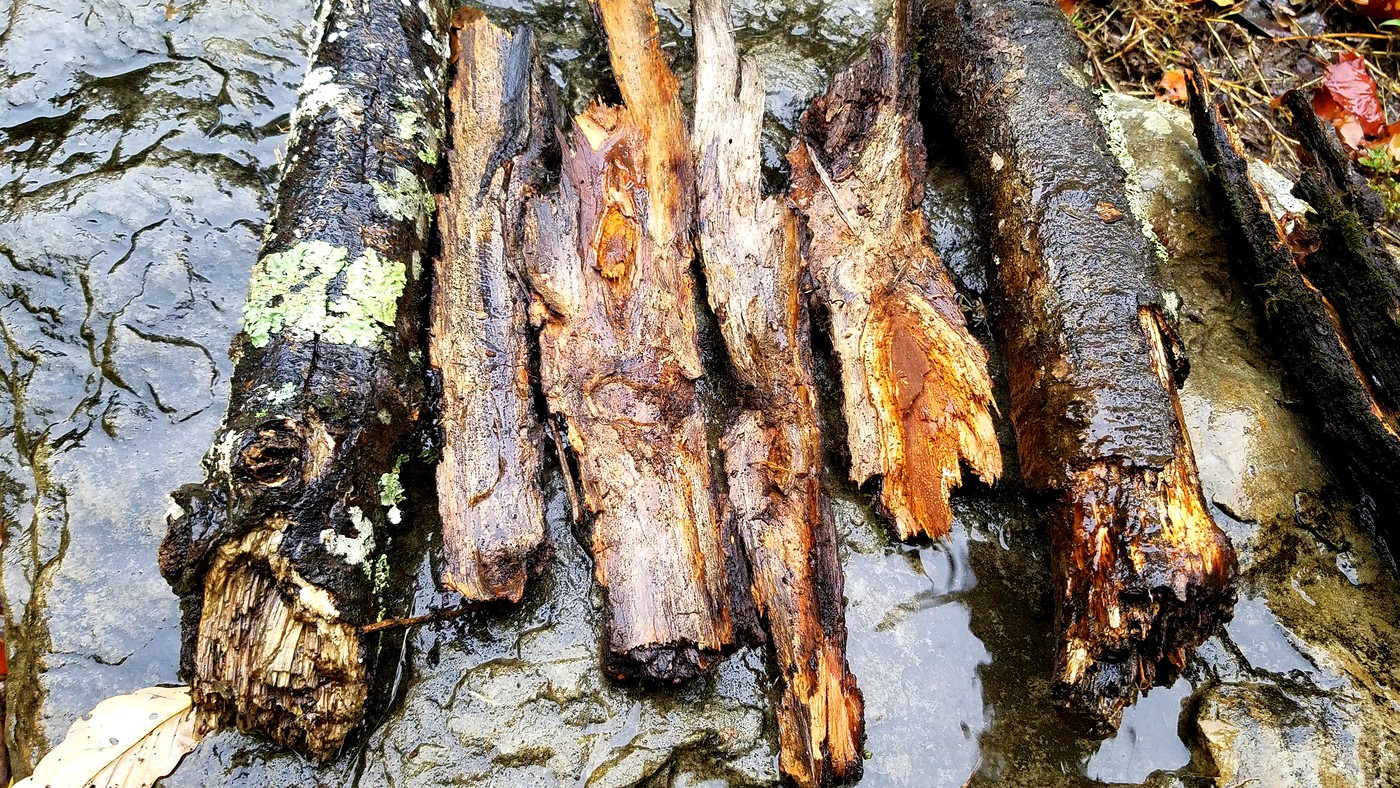
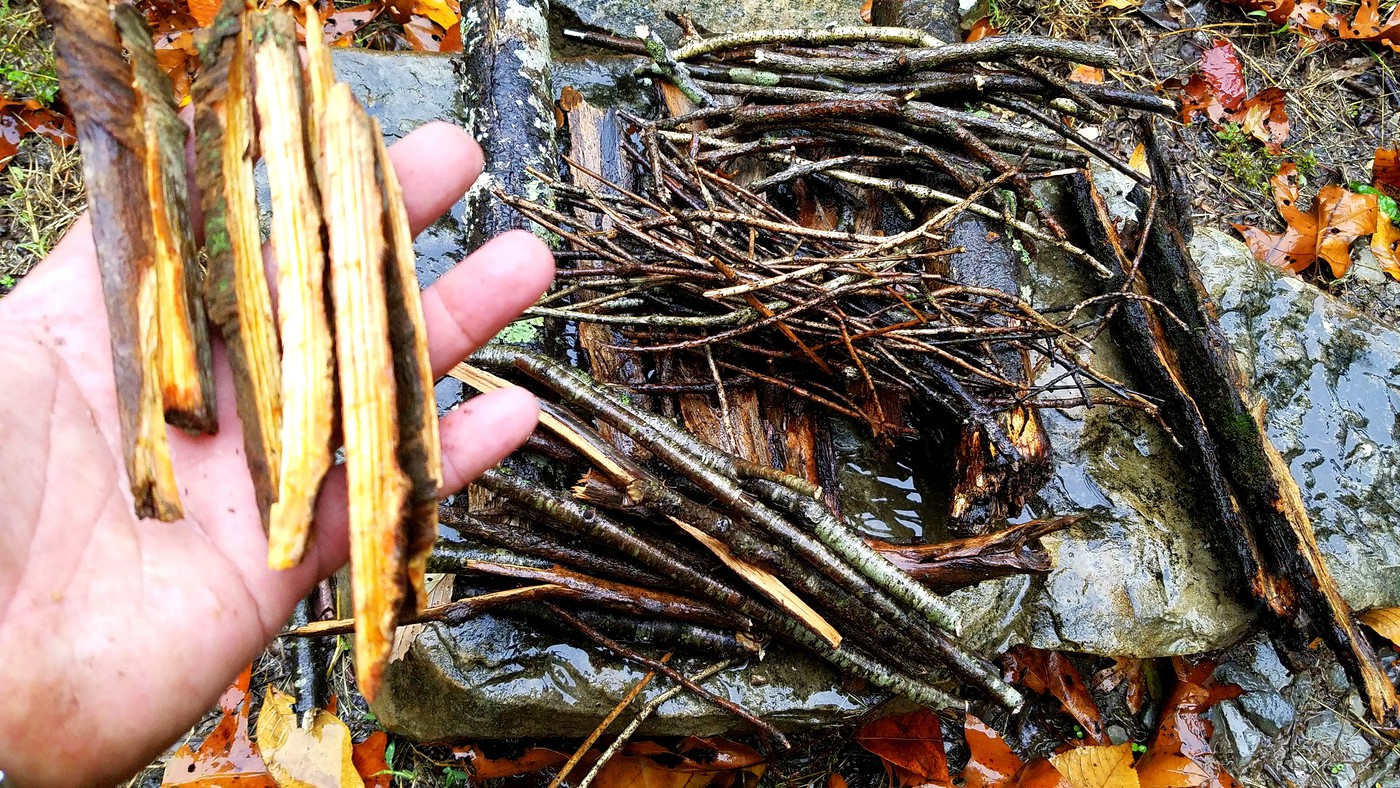
Had I worked faster, not tried to document it alone, and had the rains not gotten heavier at times, I could have probably started this fire with the ferro rod and the PJCB in the handle. In fact since I had it I did play around with it, even though that wasn't the plan. But both ferro rods and PJCBs can get too drenched to function when it is actually raining at the time you need a fire.
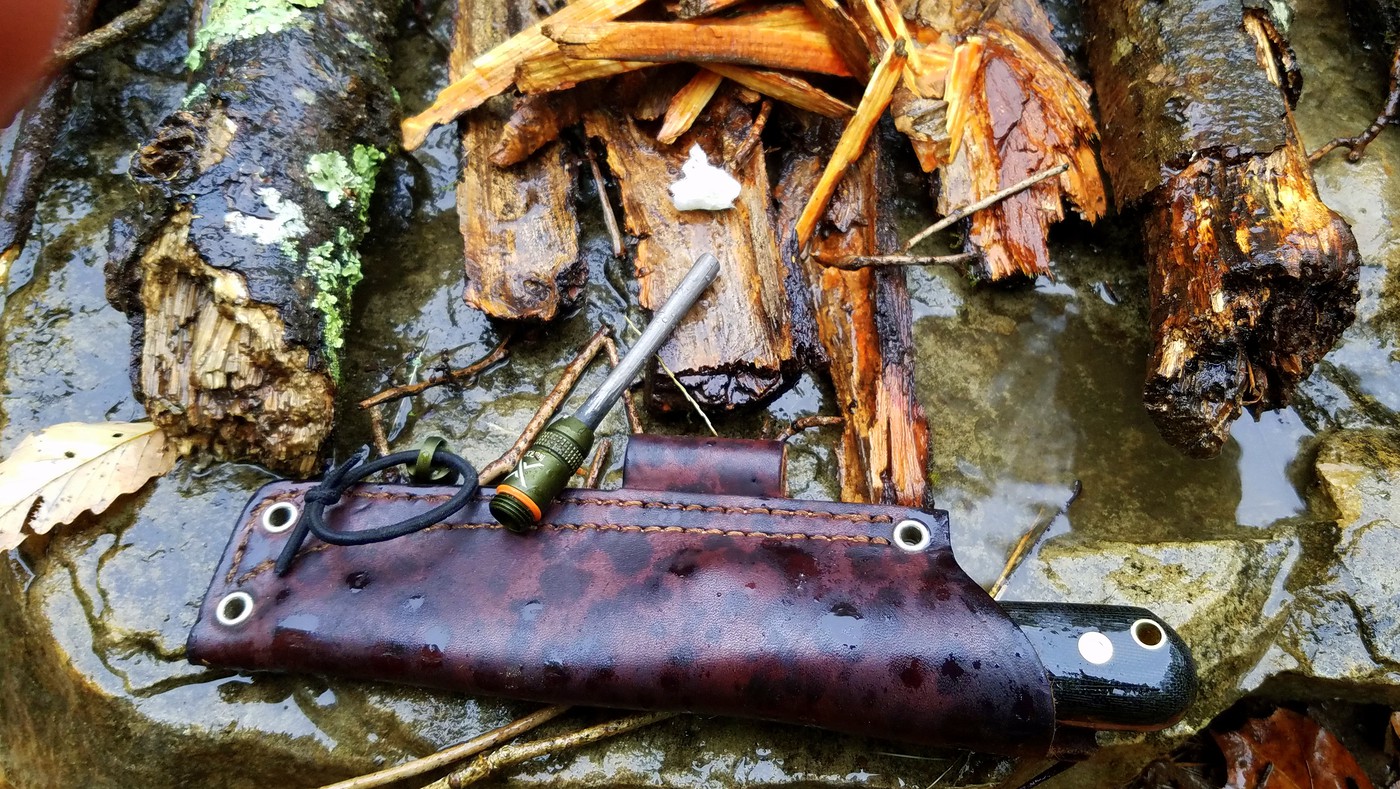
The plan to start with was to use the same type of lighter my father had taught me firecraft in this rain forest with to begin with back in the early 70s, a Zippo. I still edc a Zippo to this day for several reasons. One in that the sparking wheel and wick are covered by a protective lid. So they stay dry enough to function even in a wet pocket in the rain. Unless damaged, overfilled, or somehow left open in the pocket, they almost never lose an entire tank of fuel unless being burned. And they can be ignited and left free-standing under wet tinder to light an emergency fire in wet conditions if necessary. I have had multiple Bics drain themselves in pants pockets just from the buttons being depressed through movement from stooping, bending, squatting, and climbing etc., and be empty and useless when it was time to start the fire to warm cold wet hands or cold wet feet. I do also carry a small Bic in a kit, and a match safe full of storm proof matches as well in the winter. I've had sever frostbite once before, so I like redundant systems.
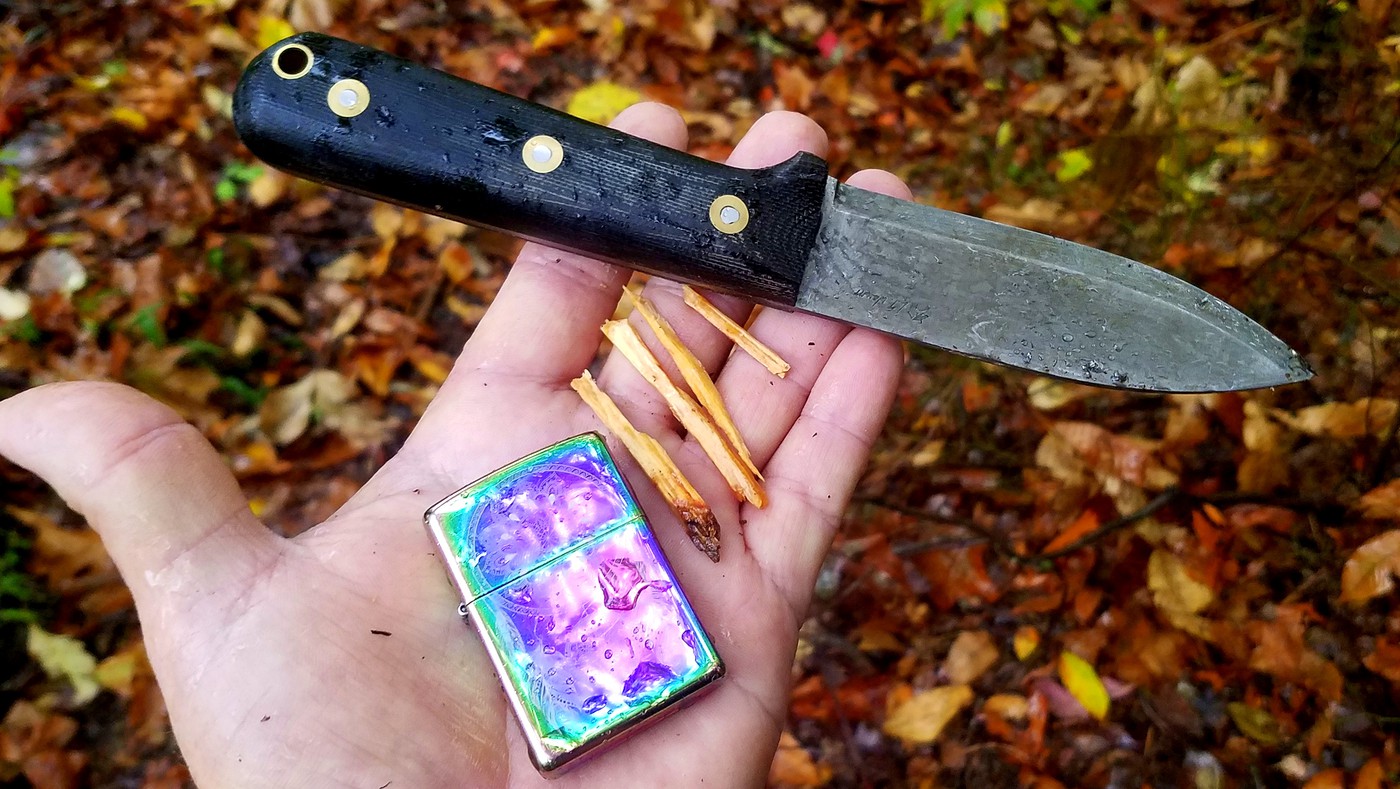
The Zippo works well in wet conditions, and the thin slivers of resin-rich pitchwood ignite easily in wet conditions. If you look closely at the first image you can see the impact of a small rain drop that landed at the edge of the flame as I was shooting this image, and the sliver kept right on burning and evaporated it away.
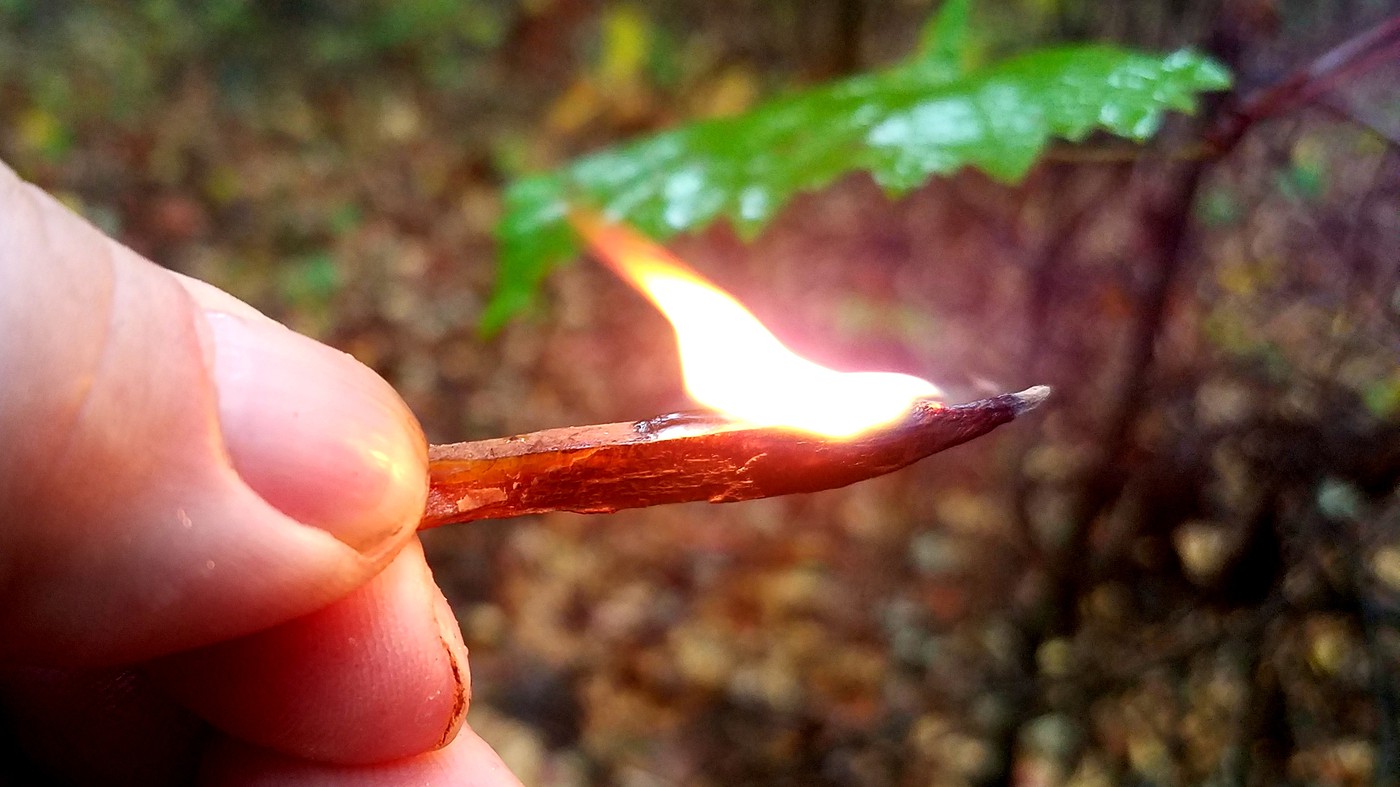


The idea is to cover the burning pitch wood, which is volatile and burns very hot, with the fuel wood in such a way that there is a little air space above the flames and between the pieces of fuel. This way the smaller fire is protected from direct hits from falling rain, but isn't suffocated in the process, and the heat is vectored through the wet fuel to dry and then ignite it. Looking at the images, you can see the amount of moisture being removed from the fuel in the form of steam.
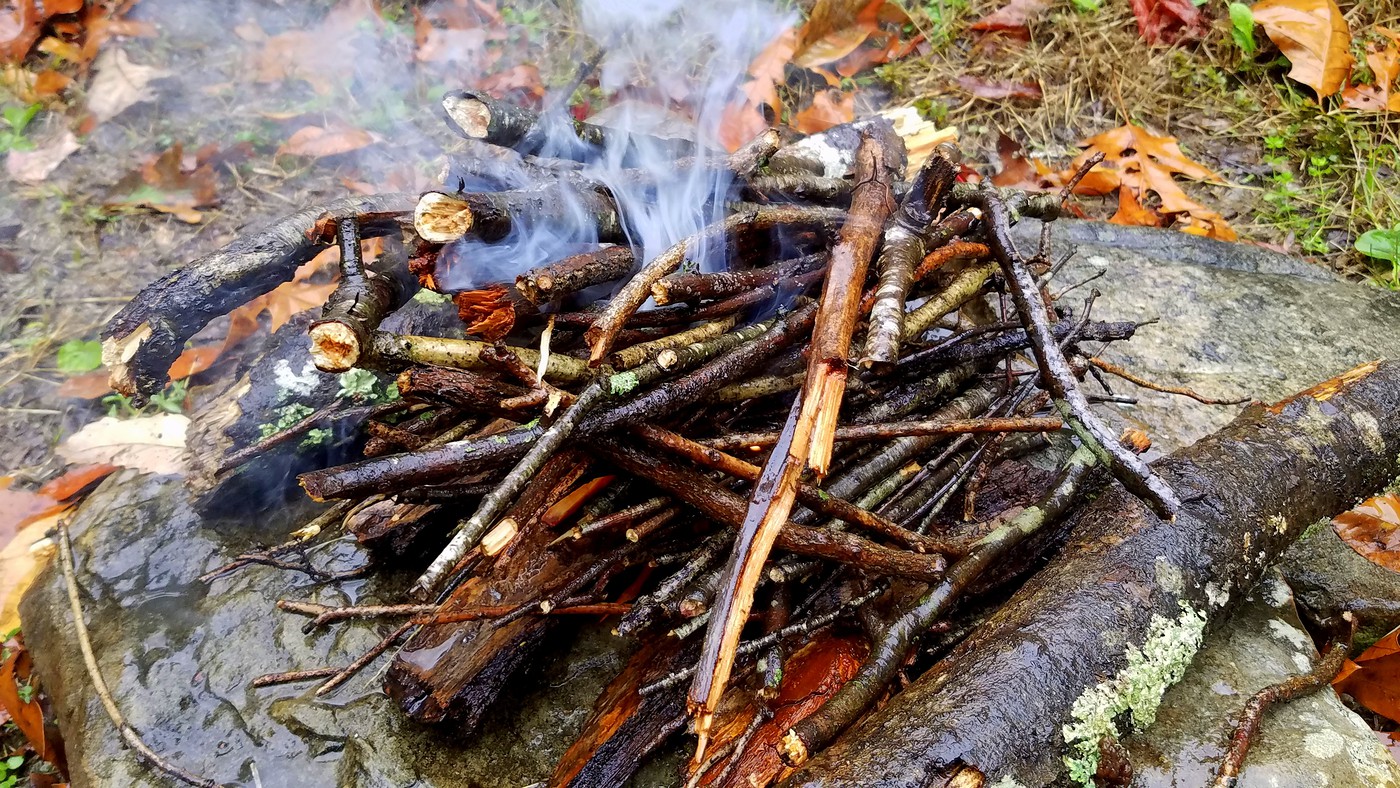

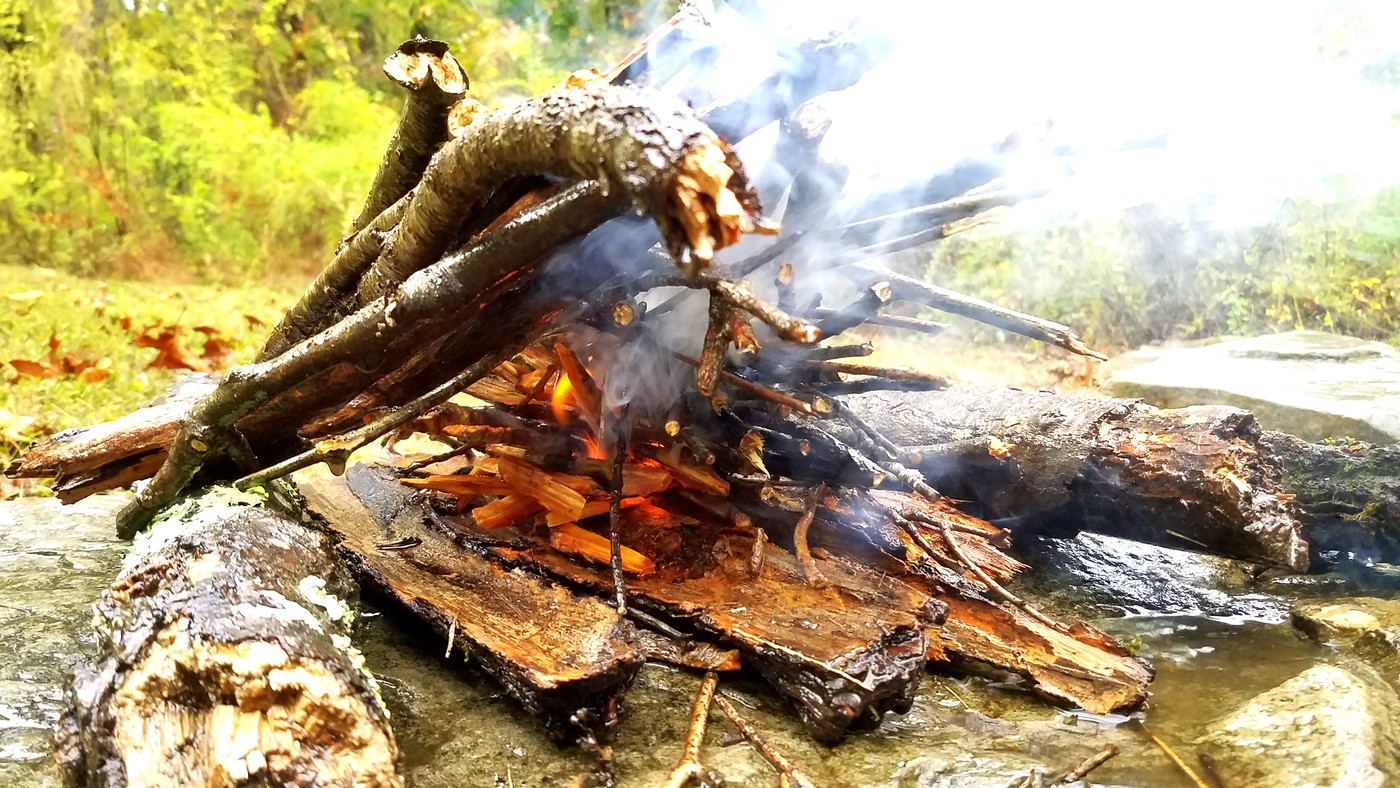
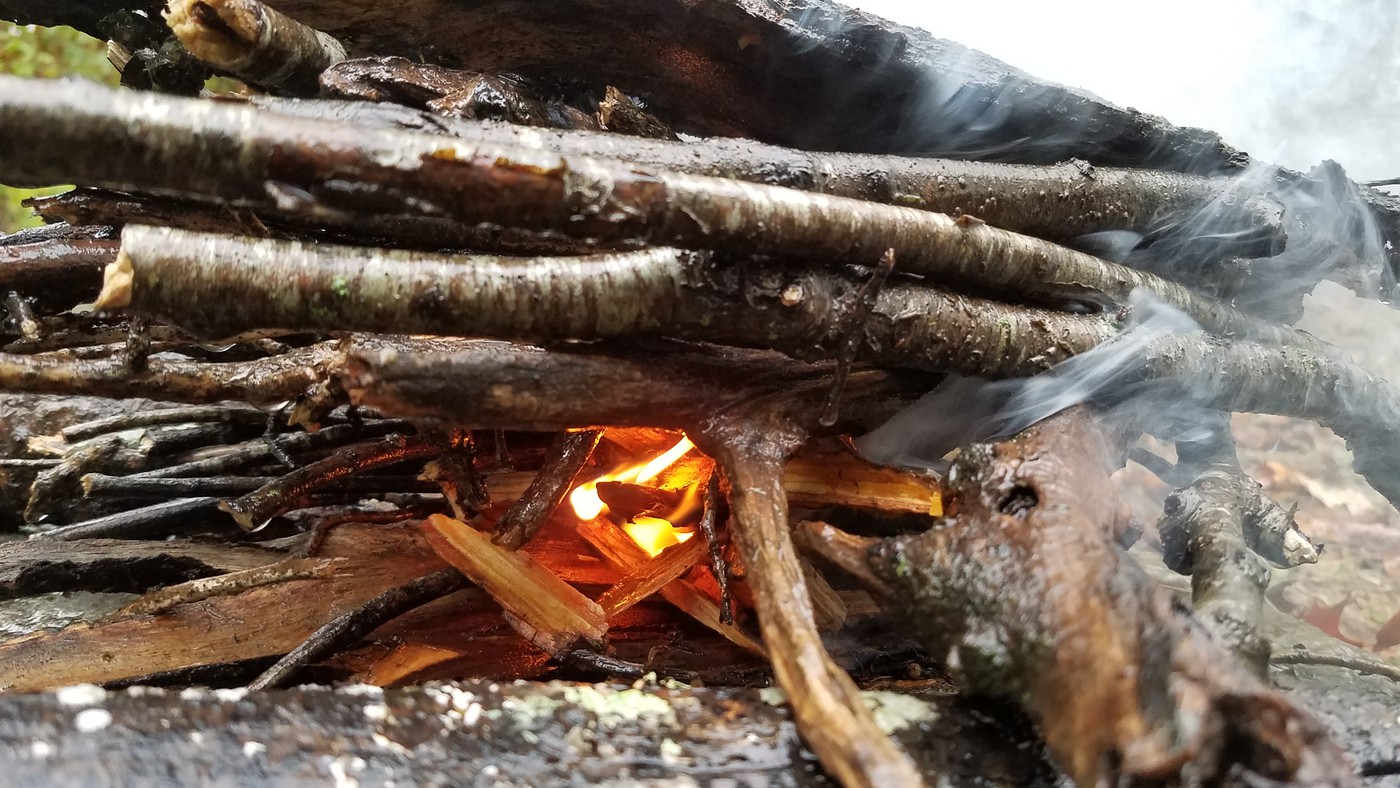
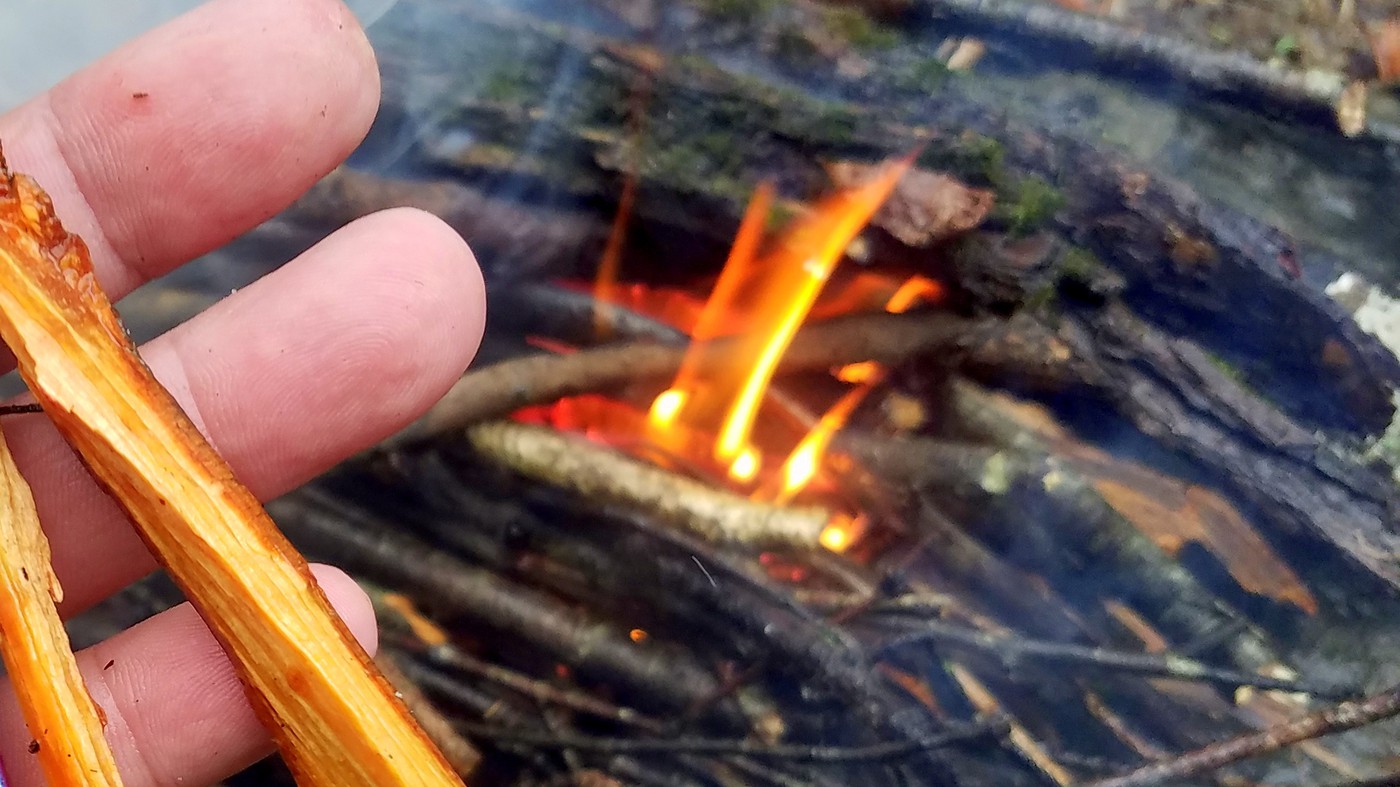
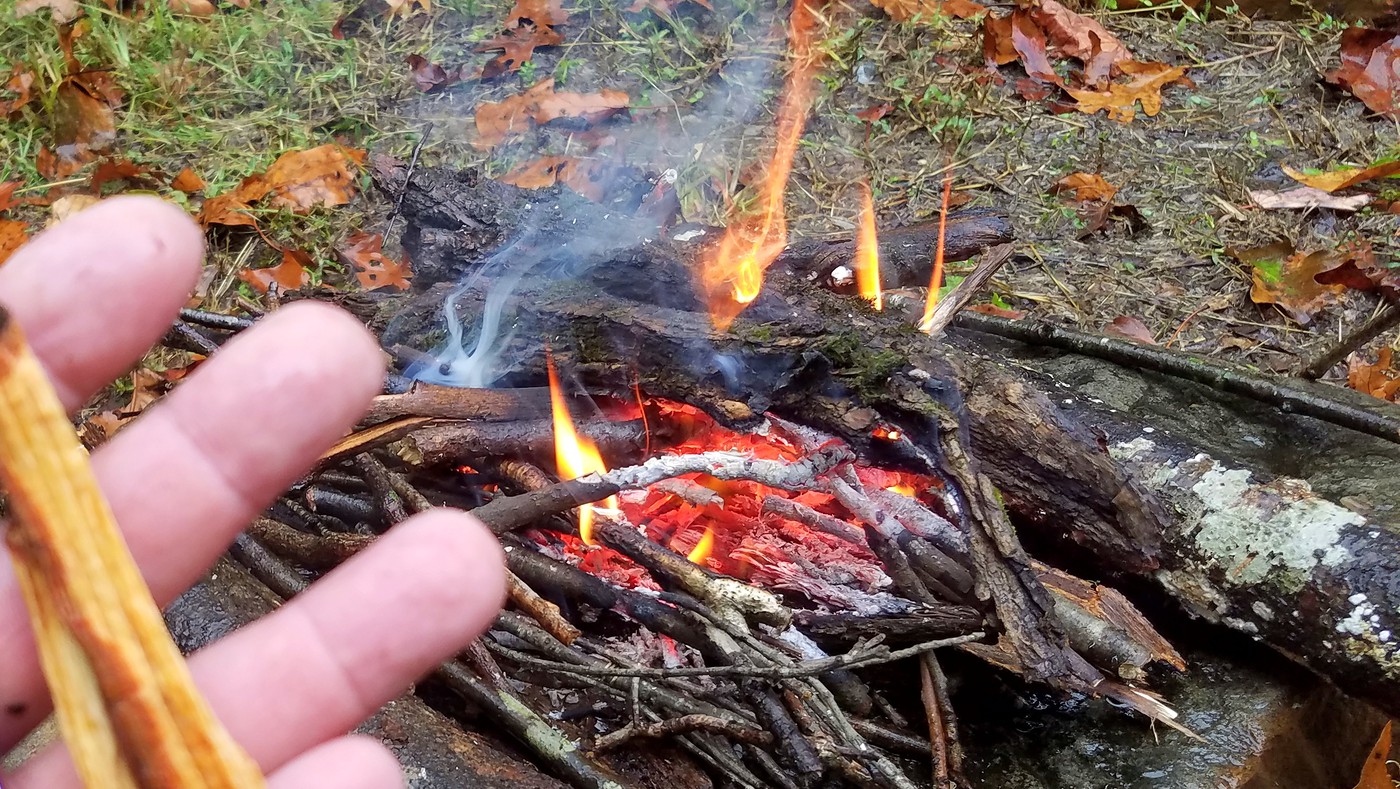
Because the process was being documented, and because I was working alone to do it and working methodically, 2 hours and 13 minutes elapsed between the first image in this post and the last one. The rain slowed to a slight drizzle twice, but it never stopped completely, and escalated to deluge levels a couple of times during the process.
The pine knots happen to be plentiful here in this temperate rain forest, and I see them as one of natures gifts to this environment. So I usually grab a couple of small ones when I see them on a hike, if I don't already have one or two in my pack. I like the knots because they are packed with plenty of resinous firestarting goodness, but have a patina on the outside so they can just be stored lose in my pack without getting the resin all over anything.
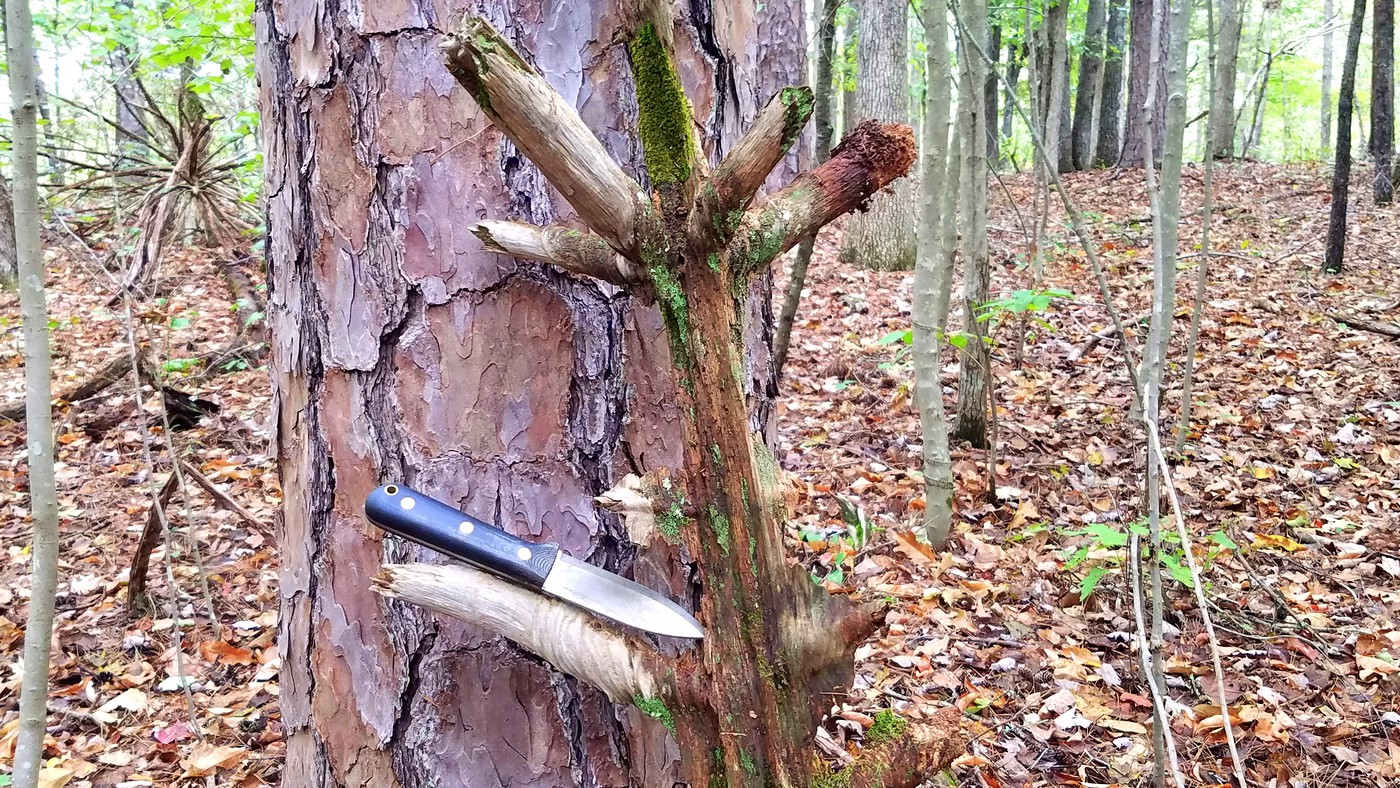

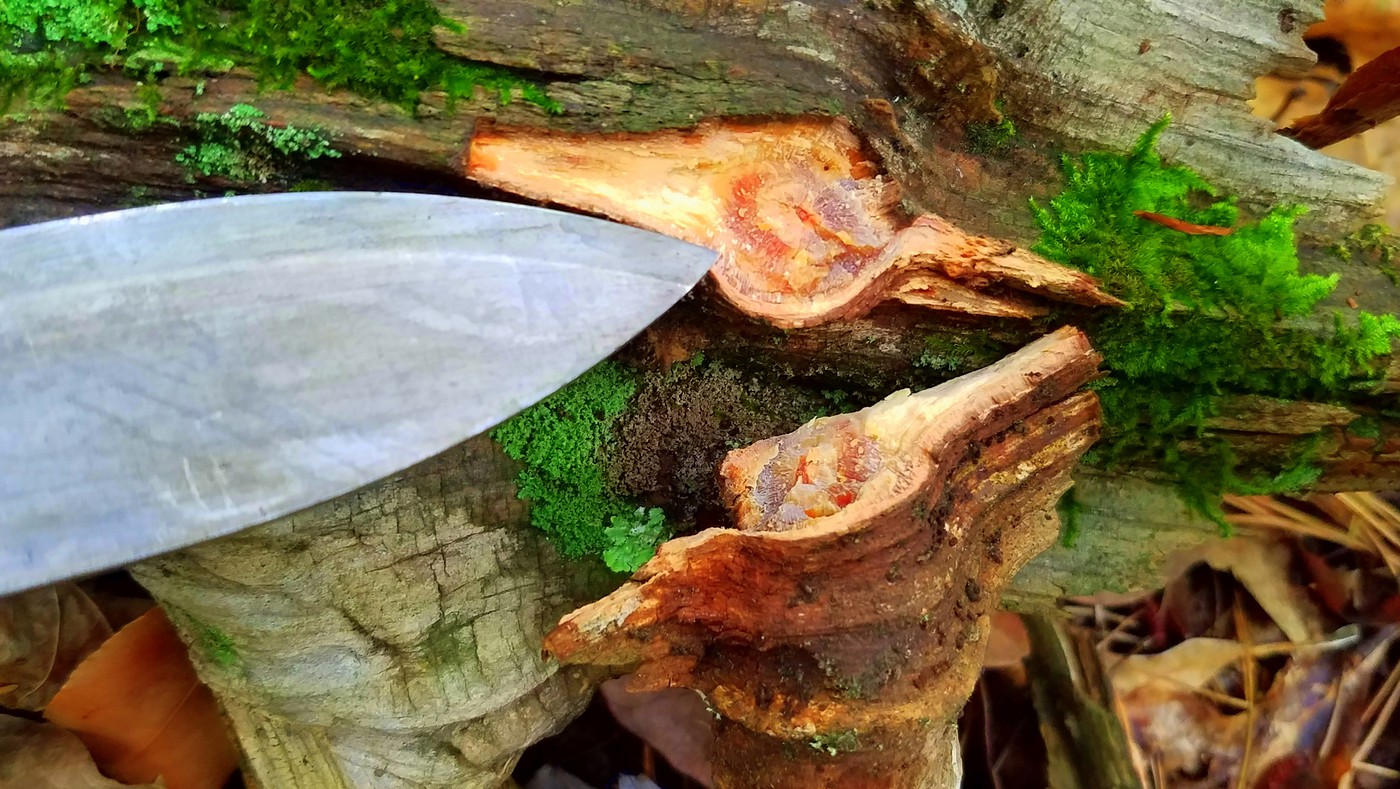
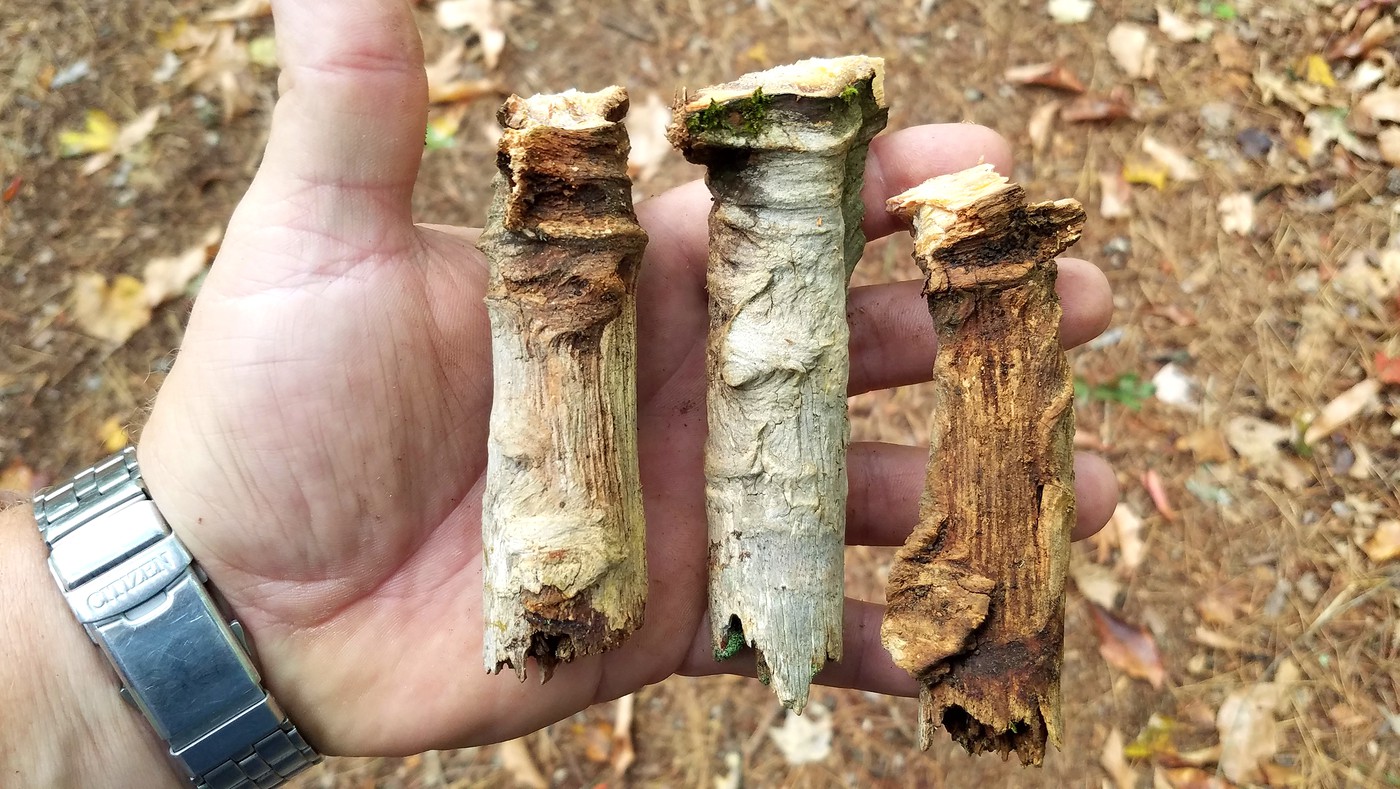
Yes, it is really raining. No it's not a pouring rain. It is a light rain in which I was out in the open for ease of documenting for other purposes. But it is something I have done in somewhat harder autumn rains, at the bases of large trees in dense evergreen thickets, on hunting and trapping trips in the 70s and 80s (pre-weather apps on cell phones) in order to avoid hypothermia while caught out in cold rains unexpectedly.

Had I not been taking the time to document this, as well as the time to explain the process to a game warden fiend in the area who stopped in to talk when he saw my truck, the dry side of the bark I was collecting here would have stayed dry longer. But it all still worked out in the end. It just illustrates that you work more with purpose than with speed to accomplish this task.




Had I worked faster, not tried to document it alone, and had the rains not gotten heavier at times, I could have probably started this fire with the ferro rod and the PJCB in the handle. In fact since I had it I did play around with it, even though that wasn't the plan. But both ferro rods and PJCBs can get too drenched to function when it is actually raining at the time you need a fire.

The plan to start with was to use the same type of lighter my father had taught me firecraft in this rain forest with to begin with back in the early 70s, a Zippo. I still edc a Zippo to this day for several reasons. One in that the sparking wheel and wick are covered by a protective lid. So they stay dry enough to function even in a wet pocket in the rain. Unless damaged, overfilled, or somehow left open in the pocket, they almost never lose an entire tank of fuel unless being burned. And they can be ignited and left free-standing under wet tinder to light an emergency fire in wet conditions if necessary. I have had multiple Bics drain themselves in pants pockets just from the buttons being depressed through movement from stooping, bending, squatting, and climbing etc., and be empty and useless when it was time to start the fire to warm cold wet hands or cold wet feet. I do also carry a small Bic in a kit, and a match safe full of storm proof matches as well in the winter. I've had sever frostbite once before, so I like redundant systems.

The Zippo works well in wet conditions, and the thin slivers of resin-rich pitchwood ignite easily in wet conditions. If you look closely at the first image you can see the impact of a small rain drop that landed at the edge of the flame as I was shooting this image, and the sliver kept right on burning and evaporated it away.



The idea is to cover the burning pitch wood, which is volatile and burns very hot, with the fuel wood in such a way that there is a little air space above the flames and between the pieces of fuel. This way the smaller fire is protected from direct hits from falling rain, but isn't suffocated in the process, and the heat is vectored through the wet fuel to dry and then ignite it. Looking at the images, you can see the amount of moisture being removed from the fuel in the form of steam.






Because the process was being documented, and because I was working alone to do it and working methodically, 2 hours and 13 minutes elapsed between the first image in this post and the last one. The rain slowed to a slight drizzle twice, but it never stopped completely, and escalated to deluge levels a couple of times during the process.
The pine knots happen to be plentiful here in this temperate rain forest, and I see them as one of natures gifts to this environment. So I usually grab a couple of small ones when I see them on a hike, if I don't already have one or two in my pack. I like the knots because they are packed with plenty of resinous firestarting goodness, but have a patina on the outside so they can just be stored lose in my pack without getting the resin all over anything.




Last edited:
